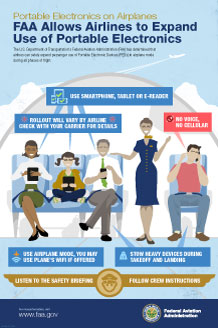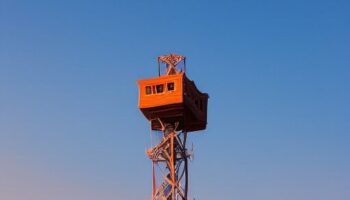As Holiday season in India already kicked in, most of the air travellers are already rushing to finish off their last minute urgent calls and replying to that last urgent email from boss on eleventh hour, only to notice that they are being asked to switch off their devices.
Aha! Welcome On-board fellow passenger. You are now in restricted access zone!
So weather you are in domestic or International flight, this nuisance you often find intolerable despite no logical reason or evidences attached to it- switching off your Smartphone/Tablet/Laptop/Kindle/iPads/iPods/Mobiles etc while take off & landing and then turning it on during journey or before getting off the flight!
It could be minor topic of discussions, but recent news of FAA, allowing passengers to use their electronic devices during takeoff & landing, would certainly have long implications on Airline industry.
Technology goes hand in hand with Airline industry. While today’s Jumbo jets & Airbus carriers are far more advance & capable to avert any in-flight, weather & crash risks, they are equipped with most advanced communication infrastructure on board. This communication system often helps pilots to navigate easily across globe crisscrossing unknown territories, while keeping them hooked to nearby ATC personnel.
General practice followed globally by airline crew is to ask passengers to switch off (India) their all electronic equipment during boarding & landing phase and allow free usage during flight journey. Sometimes passengers escape procedures by keeping their devices in AirPlane mode, by disconnecting the device completely from the network. But why follow old rules?
It’s believed that these all electronic devices, when kept on, often interfere with flight communication system and might disrupt the communication between ATC & Cabin Crew (Pilot). But a recent study by FAA Panel found no such evidences of electronic interference & claimed that most airlines are capable of mitigating such interference generated by portable electronic devices. Now FAA have asked Airlines to submit a proposal on implementing new rule by taking care of guidelines provided, first with domestic flight & expanding later on International operations.
While in India, Ministry of Civil Aviation might take note of such recommendation and explore the options with leading airline carriers in phased manner. The other option which aviation ministry might explore is allowing in-flight Wi-Fi (WLAN). Most of the western carriers have already implemented in flight Wi-Fi System (domestic) and received generous response from passengers. It would also act as differentiator in already fiercely competed airline industry in India.
As we all know, it would take some time to implement these recommendations in India, but certainly a government appointed committee can be setup to study any negative implications of such recommendations and if found no evidences can explore the phase wise implementation plan. At present, while air travelers in India are completely cut off from outside world during their flight journeys, allowing passengers to remain connected during all phases of flight journey would open multifold doors of opportunities for various stakeholders and make journeys more attractive & less boring as they are today.






